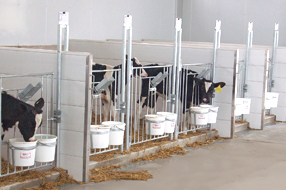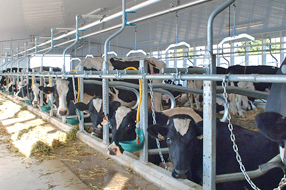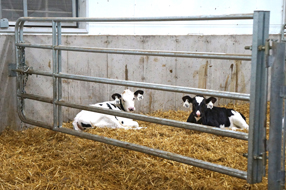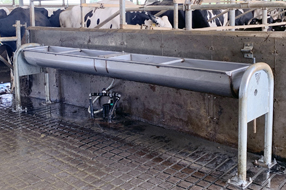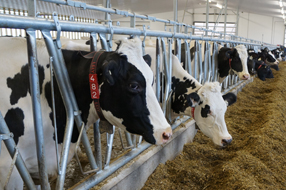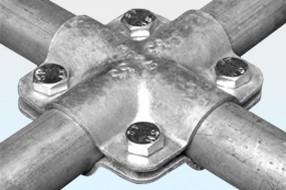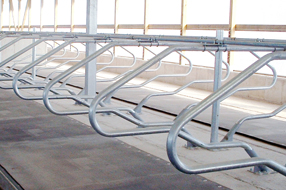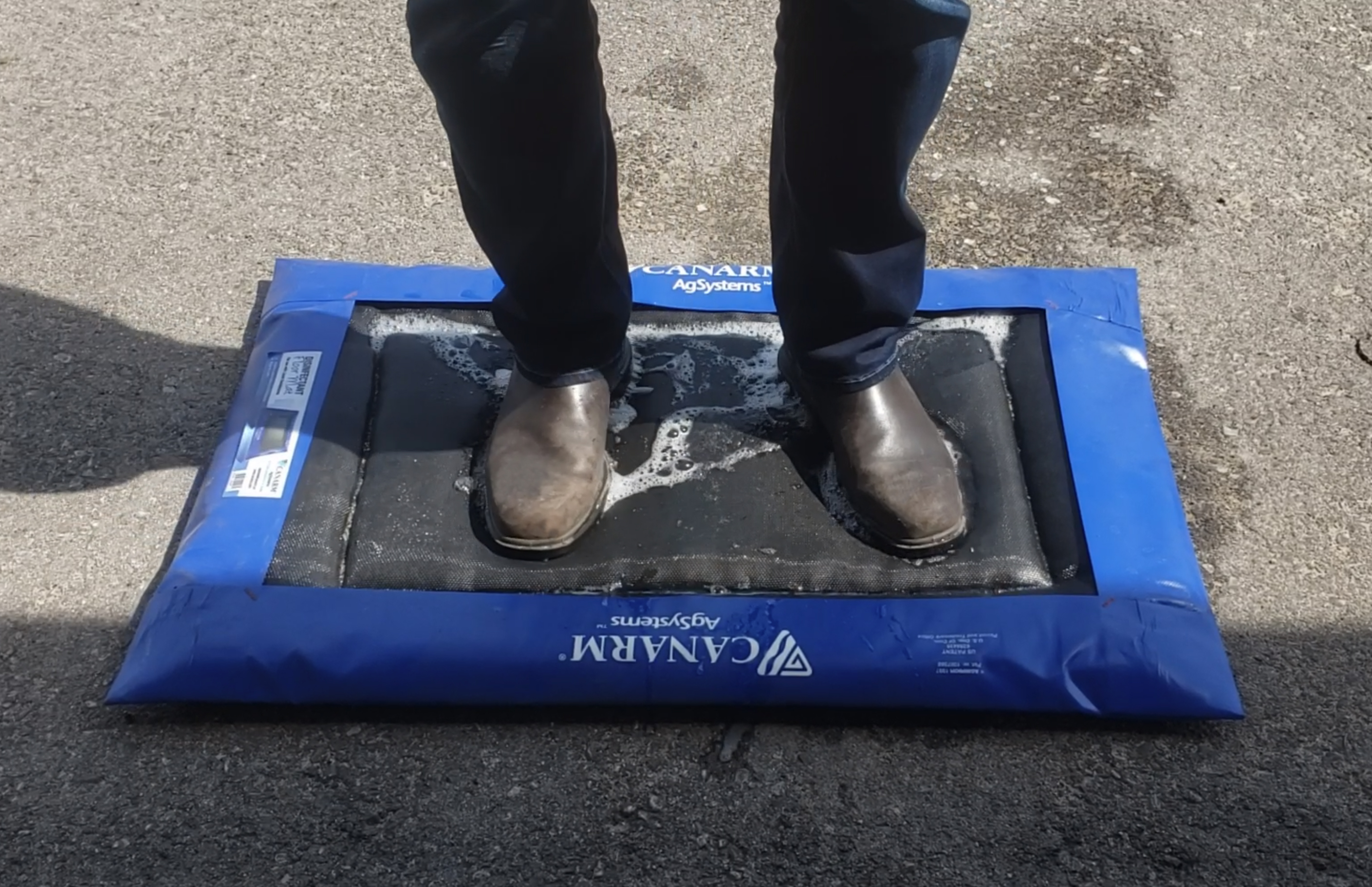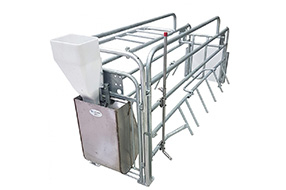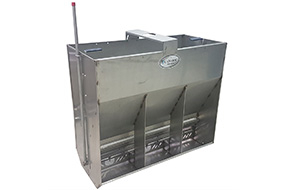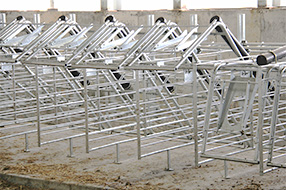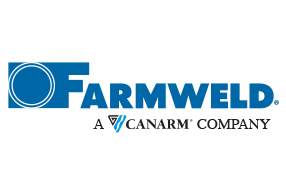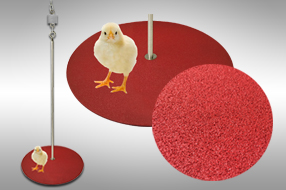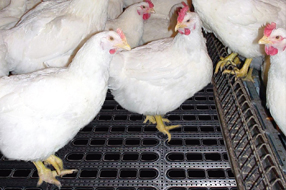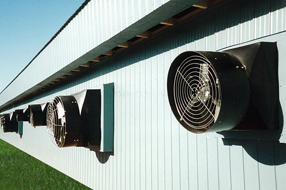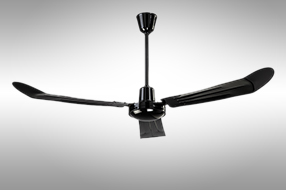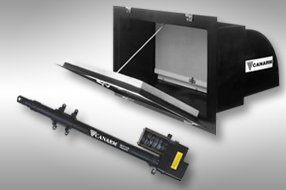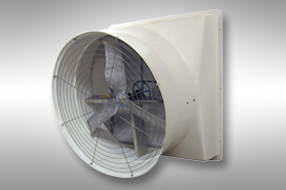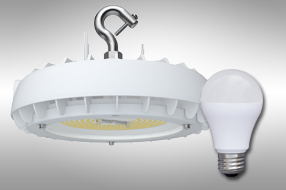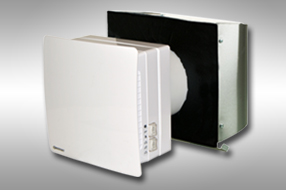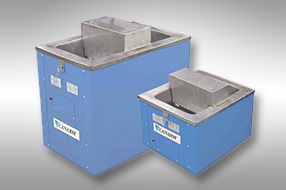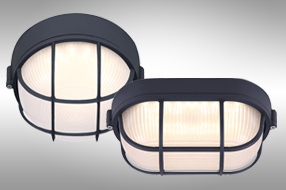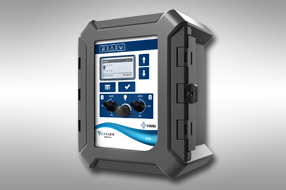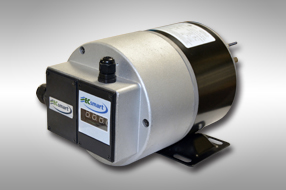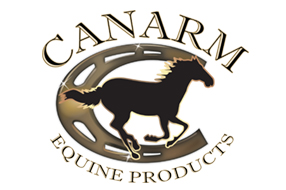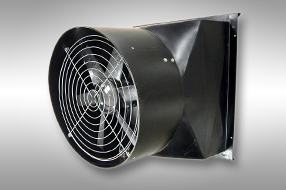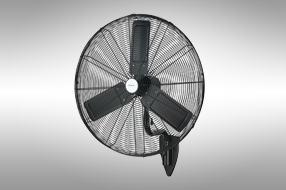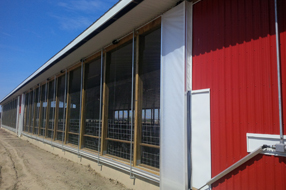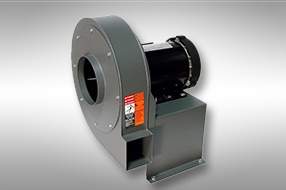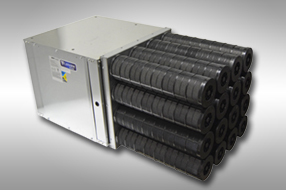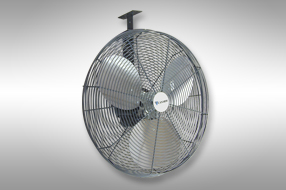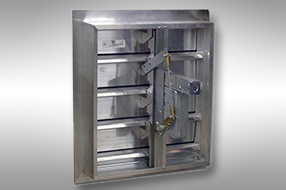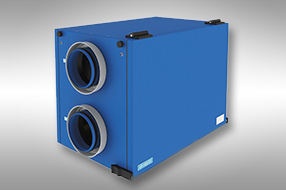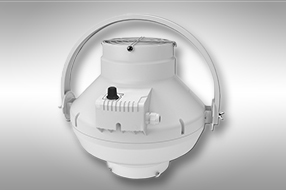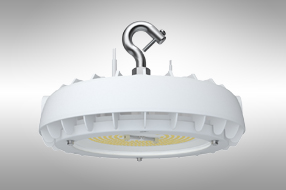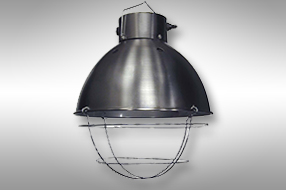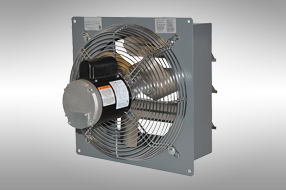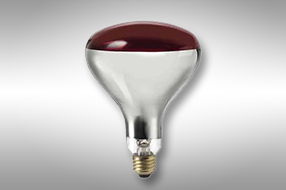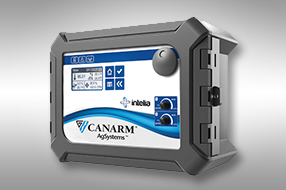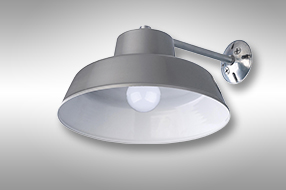Mechanical Ventilation
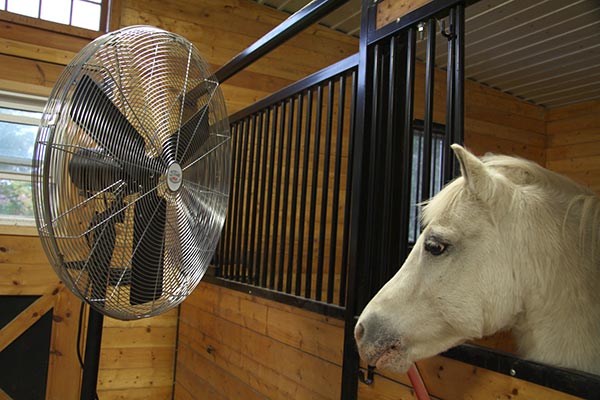
This type of ventilation uses fans, inlets, controls and roof exhausters in a pressure-controlled environment. Mechanical ventilation may also be required when there are structures such as bleachers or posts that may impede natural air flow through the building. The amount of artificial ventilation required also depends on climate and the number of horses in your barn.
A 2003 study1 by Penn State's Dr. Eileen Fabian Wheeler - an associate professor of agricultural and biological engineering - suggests minimum recommendations on how much ventilation is required for every 1,000-pound horse. A fan's power is determined by how many cubic feet of air it can exchange per minute (cfm). In cold temperatures, you will require a fan with at least a 25 cfm rating for effective moisture control. Mild weather requires fans with a 100 cfm rating for heat removal, while hot temperatures require fans with 200 - 350 cfm ratings.
There are three types of fans that can be used to achieve this.
Circulation Fans can be wall mounted, hung from rafters or models with a pedestal can be conveniently situated where needed and readily moved. However, unless the fan is placed by a window or opening, it will only reuse existing air in the barn. To increase airflow to a more diverse area of your barn, use oscillating models.
Your second choice is Ceiling Fans. Canarm offers a wide variety of decorative and heavy-duty stable fans that are both stylish and functional. Ceiling fans are ideal for cooling purposes and mosquito control. Ceiling fans require a ceiling high enough so that the fan is well above the range of your horse’s head.
The sometimes harsh environment of a barn has the potential to interfere with proper fan function. Our heavy-duty stable fan and high performance ceiling fans are sealed to keep dust, dirt and moisture from accumulating and negatively impacting fan performance.
Finally, you can use Exhaust Fans installed on the barn wall or roof. Exhaust fans offer the most powerful motor of the three fan types and are capable of moving the most air in a closed setting.
It’s also important to remember that warm air, and with it stable allergens and moisture, rises - so it would be wise to include venting through the roof to ensure effective ventilation. Roof Exhaust Systems or chimneys are effective at moving air from the stable area and exhausting it at the roof peak. When designing or fitting your barn with ventilation systems, ensure that the chimney exit extends at least one foot above the building peak so that the stable air is vented outside and not released into the attic.
Inlets control the amount, direction, path, speed and distribution of fresh air into your building. They can be adjusted seasonally to direct air either downwards towards the horses during hotter periods or upwards to the ceiling in winter so it can mix with the warmer air there.
In barns using an air duct ventilation system, inlets are used to uniformly distribute fresh air throughout the barn. Air enters through motorized shutters or other openings and is mixed with air in the barn as it travels through. Attic Inlets - In colder climates, it is possible for there to be a significant (10 to 30 degree) temperature difference between the floor and ceiling. Since heat rises, the warmer air accumulates at the top of the barn. By using Canarm’s attic inlet, you can draw this air back down to the floor and horses’ level. By eliminating this heat dissipation at the ceiling, you save money on heating costs.
Controls
Environmental controls are the core of any ventilation system. Having the proper controls for heating, cooling, air inlets, etc. and making them user-friendly is not always easy. Durability in the harsh environment of an equine facility is also high on the priority list. Therefore, we at Canarm combine all of the priorities and combine our controls with our fans and inlets to make the complete system. This all ensures that your horses are as comfortable as they can be.


